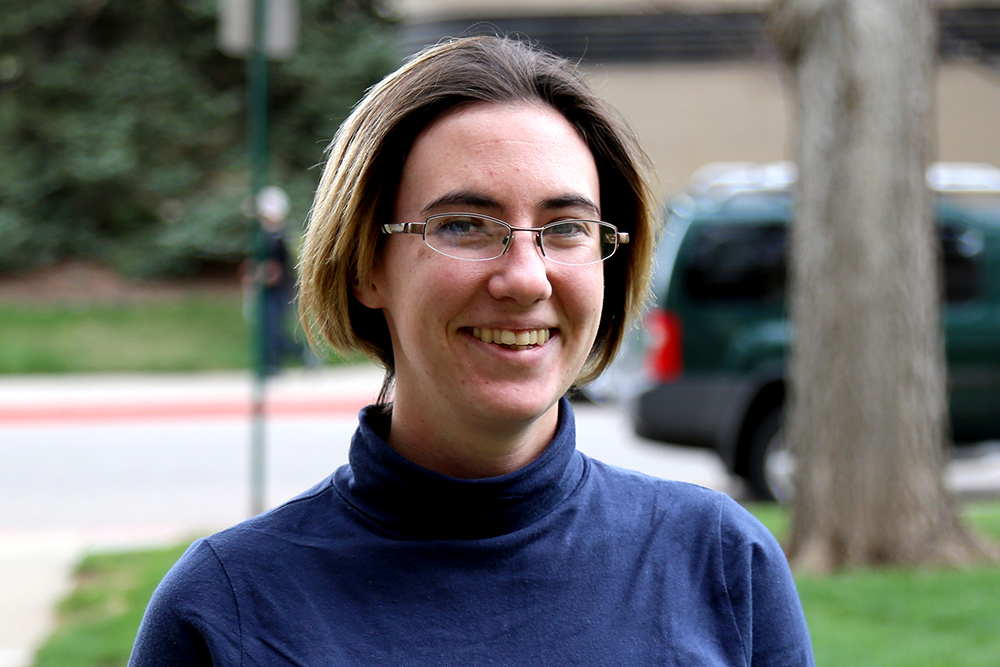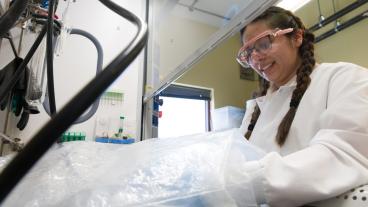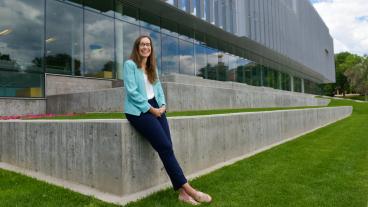GOLDEN, Colo., April 27, 2015 – A senior in Engineering Physics is starting her post-graduate career on a high note after receiving a $155,000 fellowship to support her research into using current technology to reduce the radioactive material produced by commercial nuclear reactors.
Tessa May Hennigh, who graduates this May, is staying at Mines to pursue an ME and PhD in Nuclear Engineering. She’ll be working with Mark Deinert, who joins the faculty of the Department of Mechanical Engineering and the Nuclear Science and Engineering Program this summer, and Dr. Andrew Osborne, a post-doctoral researcher in Deinert’s group.
The Integrated University Program, part of the U.S. Department of Energy’s Nuclear Energy University Programs, provides fellows $50,000 per year over three years, and $5,000 toward a summer internship at a U.S. national laboratory of similar facility.
Hennigh said learning about the fellowship opened her eyes to the possibility of pursuing a PhD. “Previously, I had just intended to do the combined degree [BS in Physics, MS in Nuclear] and then go into industry,” she said. The award, she said, made her realize “there are other people who care about nuclear engineering and its potential as much as I do.”
“I believe that participating in this fellowship program will provide me with opportunities to pursue my goal of working to make nuclear power a sustainable energy source,” Hennigh said.
Many policy issues associated with nuclear power are directly related to the accumulation of the transuranic elements americium, curium, neptunium, and plutonium in used fuel, according to Hennigh’s proposal. “Eliminate the production of these four elements and the dominant concerns that surround the future development of nuclear energy would disappear,” she said.
Several ways of turning these elements into safer forms have been proposed, but only one commercial option currently exists. Unfortunately, this method of mixing plutonium and uranium oxides to create another kind of reactor fuel is only somewhat effective, Hennigh said.
Recent research efforts have focused mostly on the development of “fast neutron reactors,” which can virtually eliminate the production of new transuranics. However, after decades of effort, fast reactors have not yet achieved commercial viability in the United States. Also, burning transuranics in these fast reactors requires reprocessing technologies that are still under development.
Instead, Hennigh will investigate the effectiveness of recycling these transuranics in conventional reactors at extremely high temperatures using a zirconium-based fuel. Hennigh said temperatures in excess of 1900K will help remove neutron-absorbing gases from the fuel, which will “increase reactivity and allow for a deeper burnup of the americium, curium, and neptunium.”
This fiscal year, the Department of Energy is funding 32 fellowships for graduate students and 59 scholarships for undergrads, to the tune of more than $5 million.
Contact:
Mark Ramirez, Information Specialist, College of Applied Science & Engineering | 303-384-2622 | ramirez@mines.edu
Karen Gilbert, Director of Public Relations, Colorado School of Mines | 303-273-3541 | kgilbert@mines.edu




